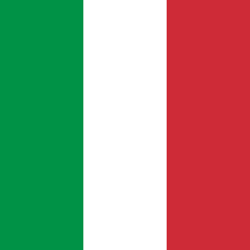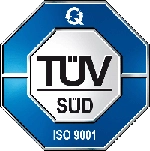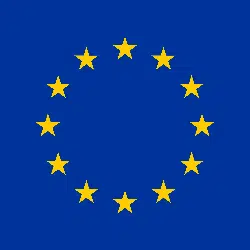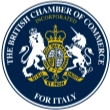The Italian Education System is organized according to the principles of subsidiarity and autonomy of educational institutions. Therefore the State has exclusive legislative competence for general rules on education. Responsability of the State is also to guarantee the levels of services throughout the national territory.
What institutions regulate the Italian education system?
The State defines the fundamental principles that the regions must adhere to in the exercise of their specific competencies. Italian Regions have concurrent legislative power in education, and exclusive legislative power in vocational education, as well as training.
In general, educational institutions of the State have educational, organizational, research, experimentational and developmental autonomy.
How does the Italian education system work?
The education system in Italy can be divided into 3 main cycles. These include early levels of education like kindergarten, up until University. Some cycles fall within the compulsory education, while others are not.
Early childhood education in Italy and kindergarten
The integrated zero-to-six-year system is non-compulsory. It lasts 6 years and includes:
- Early childhood educational services: these are managed by local authorities, directly or through agreements, by other public bodies or by private individuals, which take in children between 3 and 36 months against payment of a fee, calculated on the basis of the family’s income;
- Kindergarten: these may be managed by the state, local governments, directly or through the agreements, other public entities or private individuals, taking in children between 3 and 6 years of age free of charge.
In order to enter state kindergartens, it is necessary to participate in a ranking list, which allocates places on the basis of scores calculated by the municipality (availability of funds, possibility of receiving support from family members in childcare, etc.).
Primary and Secondary School in Italy: the first compulsory cycle of study
The first cycle of education is compulsory, lasts for 8 years and is specifically divided into:
- Primary school: 5-year education for pupils aged 6 to 11 years;
- Secondary school: 3-year education for pupils aged 11 to 14.
Secondary School in Italy and other forms of educational training
The second cycle of education is divided into two types of courses of study:
- Secondary school (High-School): it is a 5-year education period for students who successfully completed the first cycle of education. There are a wide range of schools: lyceums, technical institutes, vocational institutes, as well as courses of study for female students aged 14 to 19;
- Vocational Education and Training: 3-year and 4-year study paths of vocational education and training (IeFP) under regional competence. It is also aimed at students who have completed the first cycle of education.
Universities and other Higher Education institutions in Italy
Tertiary education, with different types of courses of study, consist in the following institutions:
- Universities
- AFAM (Alta Formazione Artistica, Musicale e Coreutica – institutions of Higher Education in Art, Music and Dance)
- Professionalizing institutions ITS (Istituti Tecnici Superiori)
Compulsory education in Italy
Compulsory education in Italy lasts for 10 years, and it goes from age 6 to 16. This compulsory period includes all 8 years of the first cycle of education and the first 2 years of the second cycle. Students can attend the second cycle in secondary school (of the state) or in regional vocational education and training study paths.
In addition, for all young people the right and duty to education and training applies for at least 12 years or, in any case, until getting a 3-year vocational qualification by the age of 18, in accordance with the provisions of Law No. 53/2003.
Compulsory education can be carried out in State and parochial schools (Law No. 62 of 2000), in the field of public education system, but it can also be carried out in non-parochial schools (Law No. 27 of 2006) or through family education. In the latter two cases, however, the completion of compulsory education must be subject to a number of conditions, such as taking proficiency exams.
Responsibility for the completion of the obligation to educate minors lies on parents of pupils, or those exercising parental responsibility. Municipalities of residence and school directors provide supervision on the fulfillment of this obligation.
What happens at the end of compulsory education in Italy
In case students do not continue their education at the end of the compulsory period, they will receive a certification of acquired skills (Ministerial Decree 139 of 2007).
After passing the final state examination of secondary education on their 5th year, students can enter tertiary education courses (universities, AFAM and ITS). However, some Universities and courses allow a limited number of students to enrol through am entrance test. It is a responsibility of the students to check the requirements of the University of interest.
Private education in Italy
Article 33 of the Italian Constitution affirms two basic principles:
- The State has an obligation to provide a school system for all young people;
- The State must give the right to natural and legal persons, to establish educational institutions without asking money to the state.
The Italian education system recognises three types of non-state schools: private schools recognised by the state (scuola paritaria), private schools not recognised by the state (scuola non paritaria), and foreign schools.
What is the difference between state schools and “scuola paritaria”?
State schools are educational institutions run by government bodies, and subsidised by the state, which enable the education of students free of charge.
“Scuola paritaria” refers to that category of public schools that are granted educational parity with state schools. From a regulatory point of view, these schools perform a public service and are included in the national education system. Therefore, they are authorised to issue qualifications with the same legal value as state schools.
Moreover, they are granted full freedom with regard to cultural orientation and pedagogical-didactical direction. Attending this type of school constitutes fulfilment by the students of their compulsory education. These schools require the payment of tuition fees and are generally run by church personnel. They also enjoy more favourable tax treatment if they are non-profit.
“Scuole non paritarie” have not been granted parity status. Attendance at these establishments always guarantees the fulfilment of compulsory education; however, they are not qualified to award qualifications equivalent to those of state schools.
The Italian high school system
At the end of secondary school, students can choose the topics to be explored in their education. The education system in Italy includes 3 main groups of institutes regarding the high school system.
Italian lyceums
Lyceums aim at getting an upper secondary education diploma. They are part of the upper secondary education system as an articulation of the second cycle of the education and training system (Article 1 of Legislative Decree No. 226 of October 17, 2005, as amended). Lyceums adopt the students’ educational, cultural and professional profile at the conclusion of the second cycle of the education and training system.
Liceal courses of study provide students with the cultural and methodological tools for a complete understanding of reality, so that they can put themselves with a logical, creative, planning and critical attitude, in front of situations, events and problems, and acquire knowledge, skills and competencies consistent with personal abilities and choices and appropriate for the continuation of higher-order studies, insertion into social life and the labour market.
Liceal paths last for 5 years and are further divided into two 2-year periods and a 5th year that completes the academic path. The paths form the educational, cultural and professional profile of the student at the conclusion of the second cycle of the education and training system.
Types of Italian Lyceums
The following are all the different types of lyceums that will focus students towards different types of future education:
- Lyceum of arts – Figurative Arts, Architecture and Environment; Design, Audiovisual and Multimedia; Graphics, Scenography;
- Classical lyceum;
- Linguistic lyceum;
- Lyceum of music and dance;
- Lyceum of science (with applied sciences option);
- Lyceum of human sciences (with economic and social sciences option).
Technical institutes
Five-year technical institutes offer a limited number of academic directions, but they will form the students to work in specific sectors, that are very important to the economic and productive development of Italy.
They are divided into two sectors:
- The Economics sector, divided into 2 branches:
- Administration, Finance and Marketing;
- Tourism.
- The Technology sector, divided into 9 branches:
- Mechanics, Mechatronics and Energy;
- Transport and Logistics;
- Electronics and Electrical Engineering;
- Information Technology and Telecommunications;
- Graphics and Communication;
- Chemistry, Materials and Biotechnology;
- Fashion System;
- Agriculture, Agribusiness and Agroindustry;
- Construction, Environment and Territory.
Vocational institutes
From 2018/2019 school year, vocational institutes offer 11 courses with enhanced laboratory activities: a new organizational and teaching model. As a matter of fact, they train students in strategic arts, trades as well as professions for development of the country’s economy.
Concurrently with the activation of the new vocational colleges, for the second, third, fourth and fifth grades, the previous curricula are active until the completion of the five-year course in 2022.
Vocational institutes are mainly divided into two sectors:
- the service sector, divided into four branches:
- Agricultural and rural development services;
- Socio-sanitary services;
- Services for food and wine and hotel hospitality;
- Commercial services.
- the industry and crafts sector, divided into two branches:
- Industrial and handcraft production;
- Maintenance and technical assistance.
Italy’s boarding schools
National boarding schools and state-run “educandati” contribute to the pursuit of the general objectives of the Italian education system both with the qualified educational offerings of inner schools and with the development of residential and semiresidential facilities.
In this way they respond to the new culture of equal opportunities, provide support for student exchanges in the community, and lastly, meet the changing demands of the students.
Universities
At the end of secondary school, it is possible, on a voluntary basis, to continue studies at universities, both public and private. The university route can be either single-cycle or divided into two paths (three-year bachelor’s degree followed by a two-year master’s degree).
Enrolment at Italian universities for foreign students
Foreign students who wish to enrol in Italian universities and do not require a visa (EU citizens), are required to produce documents regarding their previous course of study, such as declarations of value, diploma supplements or translations of certificates. Each institution can specify the list of documents required.
Students requiring a visa, on the other hand, must access the Universitaly portal to fill in the pre-enrolment application for their university course, and then complete the application at the Italian consular representations.
Italy’s education visa
Regardless of the study cycle you intend to take in Italy, you might need to apply for a Student Visa if you are coming from outside the European Union. Have a look at our full guide on how to apply for an Italian Student Visa.
If you are interested in more information about the Italian education system, you can find out more in the website of the Ministry of Public Education.


















